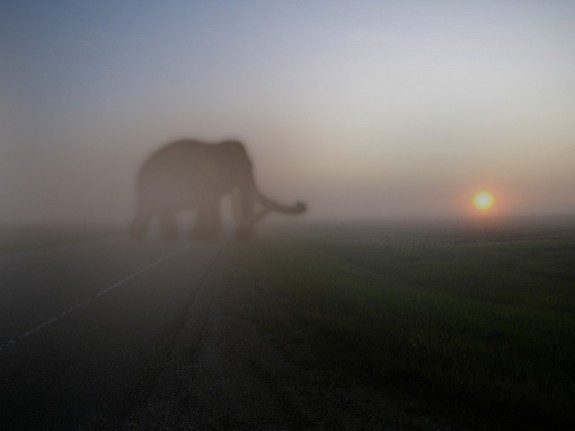Russian researchers headed by well-known mammoth-hunter Semyon Grigoriev have found something astonishing in the ice on one of Siberia’s Lyakhovsky Islands—a frozen wooly mammoth that still had liquid blood.
According to Agence France-Press, the mammoth is believed to be around 60 years old when she died and was buried by ice between 10,000 and 15,000 years ago.
Digging through ice, says Wired UK, the researchers found the preserved mammoth in temperatures around 14 Fahrenheit—far below freezing. Poking at ice cavities found alongside the mammoth’s frozen remains with an ice pick caused liquid blood to flow.
It can be assumed that the blood of mammoths had some cryo-protective properties,” Grigoriev said. “The blood is very dark, it was found in ice cavities below the belly and when we broke these cavities with a pick, the blood came running out.Aside from flowing blood, the team also found mammoth muscle with the “natural red color of fresh meat,” says a release from the North-Eastern Federal University of Yakutsk.
Grigoriev told the AFP that the find is “the most astonishing case in my entire life.” Grigoriev is well-known among mammoth hunters for his long-standing quest to clone one of the long-extinct creatures. Back in September Grigoriev made headlines when his discovery of a mammoth that was thought to still have bone marrow raised the debate over mammoth cloning. The excitement over that find, says Wired UK, “soon dissipated when it became clear that a translation error had made the discovery seem more impressive than it was.”
According to the AFP, Grigoriev is hoping to find still-living mammoth cells, and a chance to reinvigorate his dream of cloning a furry friend. For Scientific American, Kate Wong has a slightly more skeptical outlook:
From the sound of things, these remains may well revolutionize scientists’ understanding of mammoth physiology, which would be thrilling indeed. As for resurrecting this long-vanished creature, well, let’s hope it doesn’t come to that. As my colleagues and I argue in the June issue of Scientific American, de-extinction is a bad idea.More from Smithsonian.com:
Russian Mammoth Discovery May Lead to Furry Clones

No comments:
Post a Comment